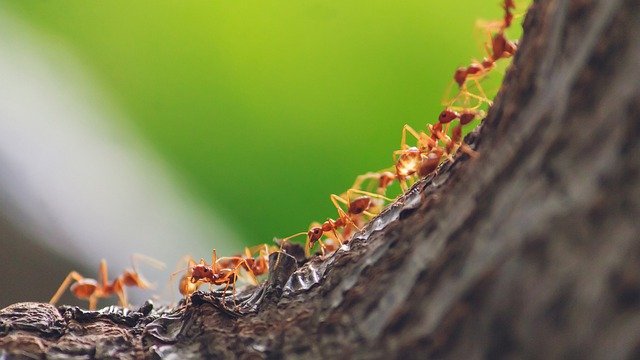There are millions of ant species in the world, and about 150 of them are active in Missouri. Most ants live in huge colonies with as many as 4,000 other ants. These hearty insects are difficult to eradicate. They carry up to twenty times their body weight and live up to two months. And, since each colony usually has more than one queen, their reproductive capacity is staggering.
Ant mounds are nearly always outside. So, the key to controlling indoor ants is usually blocking their entrance. It’s also necessary to eliminate any indoor food sources, like toothpaste in the sink, which could attract ants. Outdoor treatment, including a protective barrier, is essential as well.
Pavement Ants
These tiny bugs are about a tenth of an inch long. In addition to sucrose, they often feed on dead insects. If you see ants around a dead animal, they are probably pavement ants. As the name implies, these pests often nest in cracks and crevices in rocks and concrete.
Acrobat Ants
These ants, which are about twice the size of pavement ants, prefer moist areas, such as leaky roofs and wood piles. Acrobat ants usually come inside for sugar, and they then carry that sugar back to their nests for food. A tiny amount of sucrose can sustain the whole colony.
Odorous House Ants
Black odorous house ants are the most common indoor ants in Missouri and the central United States. Their shallow nests are usually near warm places, like water heaters or furnaces, or sheltered places, like eaves and overhangs. These bugs remain active even when it gets colder. The “odorous” moniker refers to the odor these bugs emit when crushed. Some people say it smells like rotten coconuts.
Field Ants
Thatching ants, a/k/a field ants, usually build thatch nests from yard debris. Field ants are almost exclusively outdoor ants. If they do go inside, it’s usually because there is no more honeydew available outside.
Carpenter Ants
When most Missourians think of ants, they usually think of carpenter ants. One of the largest kinds of ants, carpenter ants are usually black, but they might also be brown or red. The name suggests that, like termites, carpenter ants eat cellulose. But instead, carpenter ants usually eat sugar, like most other ants. Carpenter ants do prefer to nest in rotting wood, which is probably how they got their name. These insects usually swarm in the fall and spring. During the winter and summer, they are relatively inactive.
If you see ants, we’ll take care of them.
